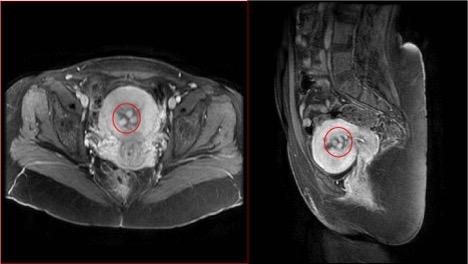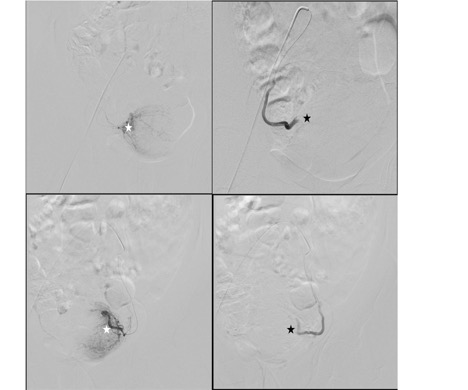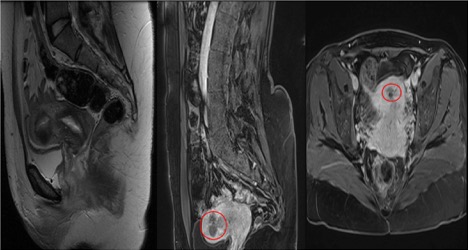


Theme
Diagnostic & Interventional Radiology
INSTITUTION
Prince Sultan Military Medical City

Uterine artery embolization (UAE) is a minimally invasive technique for the management of symptomatic uterine fibroids, adenomyosis, and postpartum hemorrhage.[1,2] Preserving virginity is of utmost importance in the Muslim and Saudi Arabian cultures. We report a case of UAE to treat endometrial polyps in a virgin patient who preferred to preserve her virginity without obtaining histopathological diagnosis.
A 42-year-old female patient presented with menorrhagia and chronic anemia for 10 years. Baseline pelvic magnetic resonance imaging (MRI) showed multiple hypervascular endometrial polyposis of variable sizes up to 11 mm [Figure 1].

The patient was offered hysteroscopic resection of endometrial polyps to exclude underlying malignancy. Being virgin, the patient refused to undergo any transvaginal intervention for social reasons and preferred to proceed with a trial of UAE. After securing, patient informed consent UAE was performed under local anesthesia using the standard technique with polyvinyl alcohol particles (45–150 μm, Boston Scientific, USA) [Figure 2].


The patient had an uneventful recovery with improved symptoms reporting regular painless periods and normal hemoglobin levels. A follow-up pelvic MRI after 7 and 18 months showed complete atrophy of endometrial polyps [Figure 3].
The prevalence of endometrial polyps in women with abnormal bleeding is 10%–40% and the malignant changes can be found in 3% rendering histopathological examination a necessary step to exclude malignancy. Conventional management of patients with endometrial polyps includes hormonal treatment for symptoms control, simple polypectomy, and more invasive surgical procedures.[1,2] In Muslim and Saudi Arabian culture, disrupting virginity before marriage time is religiously and socially unacceptable without legal and medical justifications. Accordingly, female patients with such uterine problems usually refuse to undergo conventional surgical treatment, transvaginally, such as the present case.
While this case was successfully managed by UAE with no recurrence on mid-term follow-up, we still highlight the importance of obtaining histopathological examinations of polyps before any treatment to excluded malignancy. Embolization should not be offered as a standard treatment of polyposis, to avoid delaying diagnosis of malignancy.
1. Beebeejaun Y, Varma R. Heavy menstrual flow: Current and future trends in management. Rev Obstet Gynecol 2013;6:155-64. 2. Kınay T, Öztürk Başarır Z, Fırtına Tuncer S, Akpınar F, Kayıkçıoğlu F, Koç S, et al. Prevalence of endometrial polyps coexisting with uterine fibroids and associated factors. Turk J Obstet Gynecol 2016;13:31-6.
 Send Email
Send Email